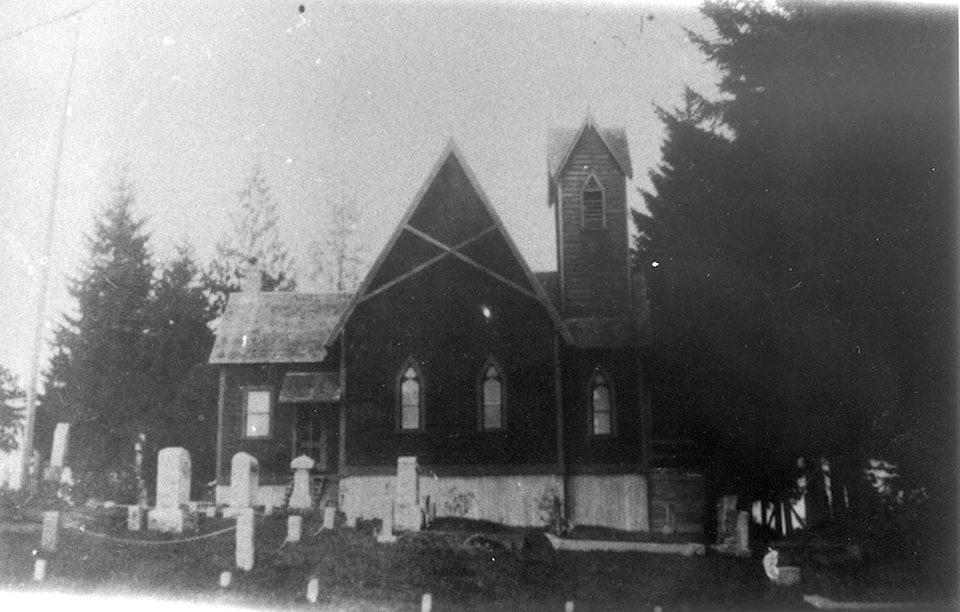By Sue Bryant
Surrey Centre Cemetery sits on the top of the hill above Mud Bay, overlooking farm land and the surrounding area as it has done for the last 130 years. As the local communities have grown and prospered, we often overlook this jewel of history which tells the stories of our pioneer families in their final resting place.
Throughout the granite, marble and even wood-carved stones that dot the historic Christ Church grounds, one can find names of those pioneer families who nearly a century later still have a deep mark on the community: Kells, Woodward, Johnston, Boothroyd and Bose to name a few.
Today, we are fortunate to have such a monument as Surrey Centre Cemetery, which serves as the final resting place for over 6,000 community members who have passed on but are not forgotten. While it is still very much an active cemetery, the stories that beg to be told of those that have gone before us are innumerable.
In 1881, businessman and farmer Abraham Huck donated land for the municipality to build a town hall, school church and of course, a cemetery. The church was built in 1884, with lumber from mills in New Westminster brought down the Serpentine River and up to Surrey Centre by oxen.
The foundation stone was cut by H.T. Thrift and laid with full Masonic honours on Aug. 6, 1884. Enclosed within the cavity of that corner foundation stone is said to be Masonic and church records, coins of the Dominion and copies of local newspapers.
On the church grounds is the cemetery, a final resting place for pioneers and over 500 veterans. The cemetery has a separate military section, but one can also find many service member memorials throughout the 16-acre grounds. Each war grave marker is made in the same fashion to ensure all members are honoured in the same way, regardless of rank, social status or class.
One such military grave marks the resting place of Nursing Sister Lt. Kathleen Knight. Born in Moncton, NB in 1888, she studied nursing in Quebec before she joined the Canadian Expeditionary Force as a nurse in the First World War. Once admitted to the military, a nurse would receive the rank of lieutenant which would allow the advantages of salary, leave and retirement.
However, the authority as an officer was limited to the hospital grounds only. Knight was paid a salary of $111.60 per month for her services. After the war, she settled in Cloverdale and continued her nursing career at the Royal Columbian Hospital. She was active in the Victorian Order of Nurses (VON) and nursed within the community before passing away in 1946. In her career, she would have practiced during the ravages of war, but also during the Spanish Flu epidemic of 1918. She would have seen polio, tuberculosis and small pox as well as the triumphs of modern medicine with the advent of antibiotics, blood transfusions and surgical anaesthetic.
Dr. Fred Sinclair and his wife, Isobel, rest peacefully to the west of the churchyard. Dr. Sinclair was a fixture in Cloverdale and the surrounding area as the only doctor from 1910 to the early 1950s. He was instrumental in getting the Victorian Order of Nurses established in the area, as well as the Surrey Memorial Hospital.
Slightly north of the church, under a large tree in block 33, you will find the unmarked graves of the Scott family. Henry Houston Scott and his wife Emma came to Cloverdale from the United States in 1912, following the railway lines as a porter. Henry was born as a slave in 1854 in Fanning Country, Texas — he would have about 12 when slavery was abolished. He married Mississippi-born Emma and they had three children: Roy, Jesse and Geraldine.
Times were difficult for the family in the United States, but they had heard of the promise of the Fraser Valley and made their way north of the border with their school-aged children. The family purchased a small farm near 181 Street and 64 Avenue, and became well respected hay farmers.
In a 1920 council meeting, Henry Scott went with another local farmer, Henry Bose, to ask council to fund the clearing of a road from Bose Road (now known as 64 Avenue) and Pacific Highway (now 176 Street) up to the Scott farm, which is located where 181 Street would be today. The motion was granted, which allowed the Scott farm to more readily meet their customers’ demand for hay. Henry Scott passed away in 1934; his children carried on with the farm for the rest of their lives, but never married. As the family left no descendants, this is likely why the graves remain unmarked today.
When visiting the cemetery, one can see it is a place of not just quiet reflection and remembrance, but peaceful and historic as well. There is a butterfly garden in the centre, full of fragrant, vibrant flowers in the summer and recently, the site was the also the location for the planting of a tree descended from Vimy Ridge.
While Abraham Huck’s land and surrounding area looks much different than it was the day he donated it so many years ago, he would no doubt be pleased to see the community continues on in remembrance of so many lives well lived.
Sue Bryant is an oral historian and a member of the Surrey Historical Society. She is also a digital photo restoration artist, genealogist and volunteers at the Surrey Museum and Surrey Archives.
